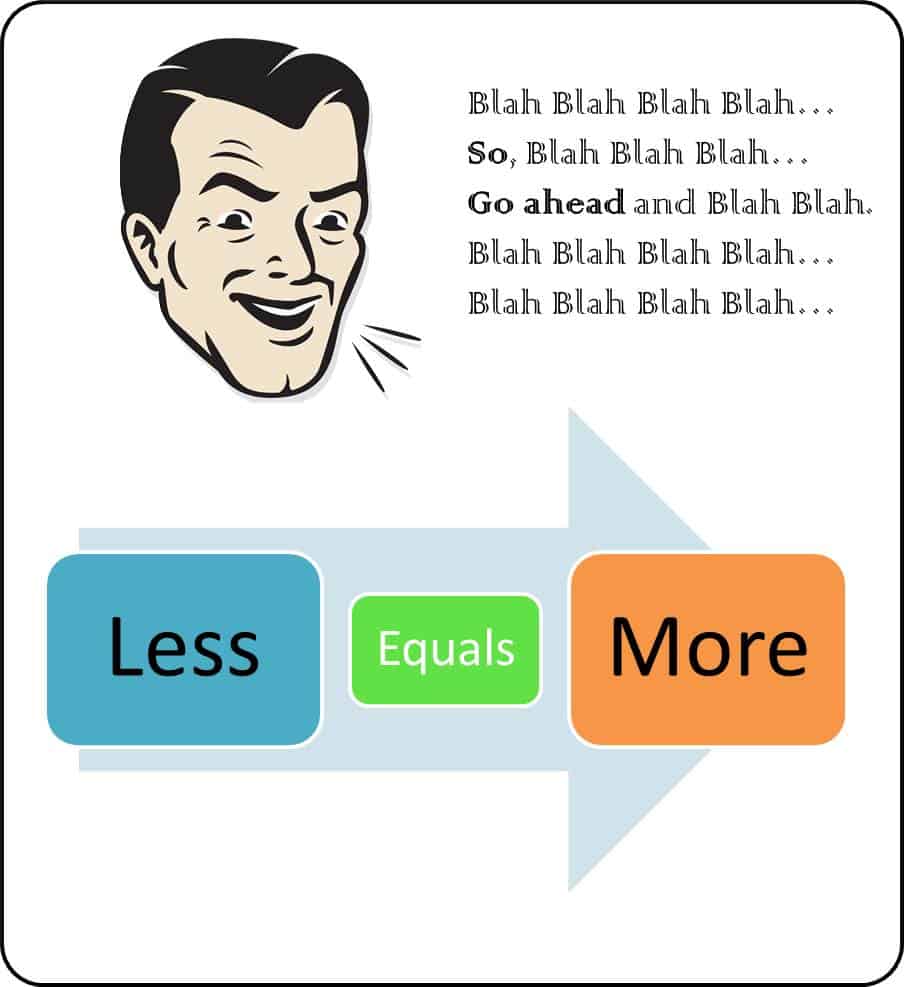
Today, it’s my job to remind you that when it comes to communication, brevity is good. Brevity is very good.
One of Andy Crowe’s favorite quotes on this topic: “Less is more.” Make your words count. Use them sparingly.
We are collaborating with Neal Whitten on several projects for InSite, and in one of the courses, Neal makes a related point. I’ll paraphrase: When you consider those managers that are higher up the organization chart, remember that they have more responsibilities and less time. Therefore, project managers must tailor their reports to keep them brief, succinct, and valuable.
Meaningless, filler words are the enemies of concise communication. Let me give 2 examples.
1st example: “So…”
I’ll pick on me first. While recording audio for an upcoming InSite course, I became aware of an annoying habit. I overused the word “So” in a segue phrase or as a transition word. “So, let’s talk about this…” “So, what action should we take…” I had to kick the habit…fast!
2nd example: “Go-ahead”
My wife had an issue with her mobile phone and called technical support. The representative was polite and professional, but she kept using the phrase “go ahead” to the point of distraction! “Let’s go ahead and open a service ticket…” “Now, we’re going to go ahead and reset your phone…” “I want you to go ahead and press the button…”
As communicators, our challenge is to ruthlessly review and refine our message. Cut the filler words out. Kick bad habits. Take your speech and writing to the next level. As Jim Collins noted in Good to Great, it’s time to “rinse the cottage cheese” (p.127) and rid our communication of any unwanted fat.
If you practice the art of communication brevity at work, your stock will rise.

